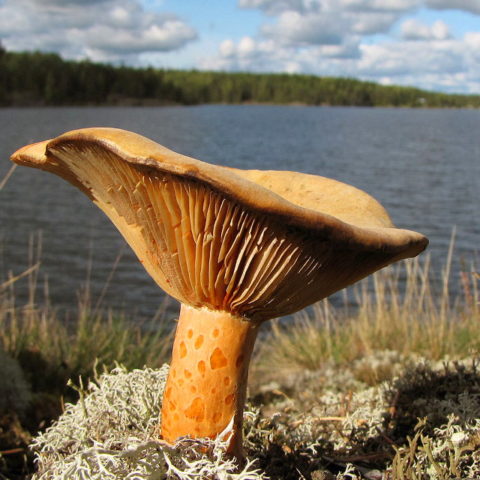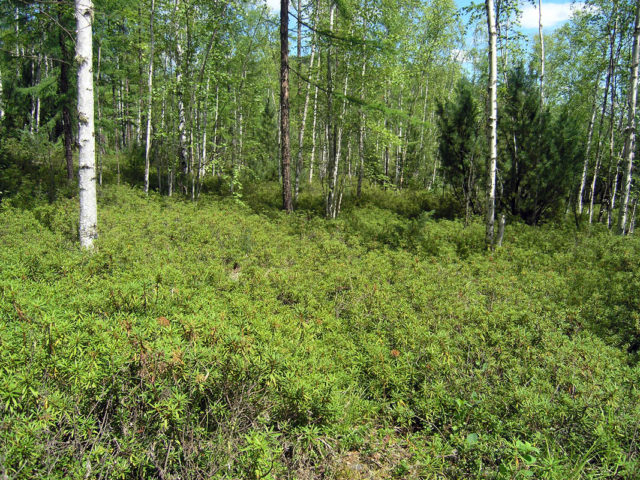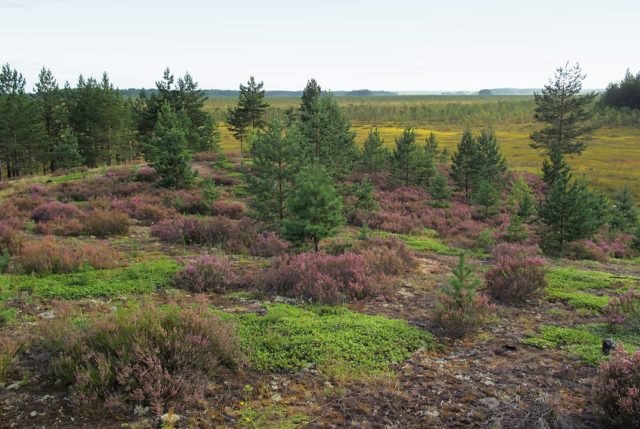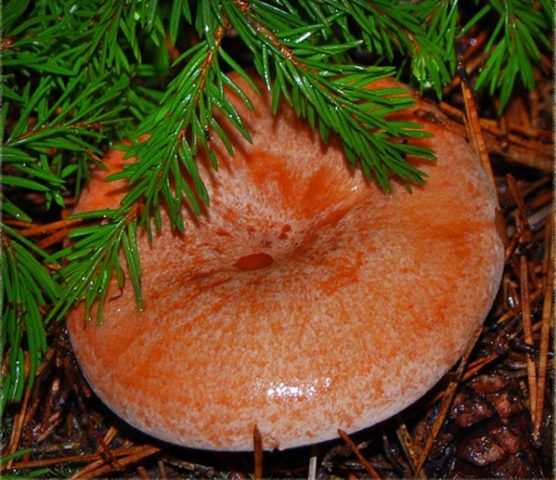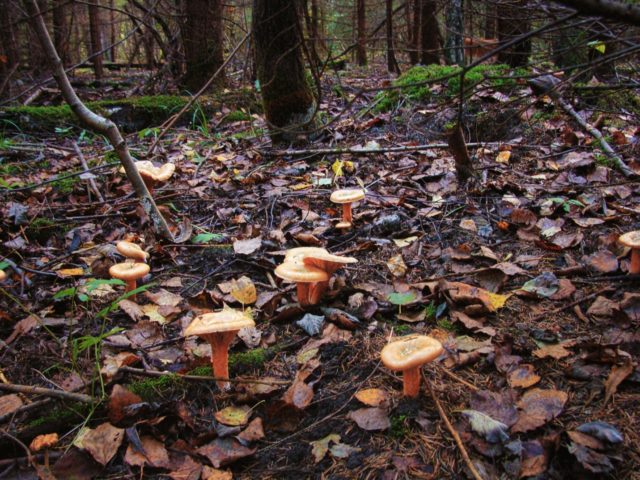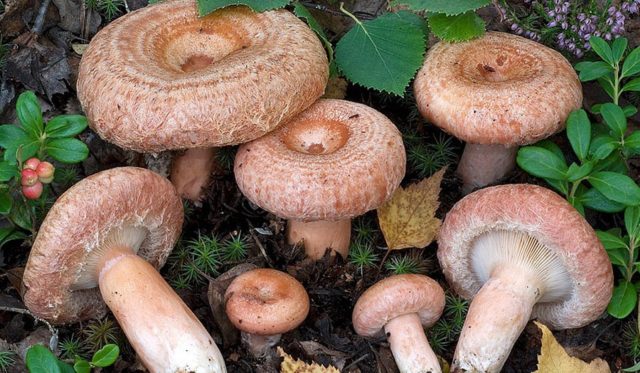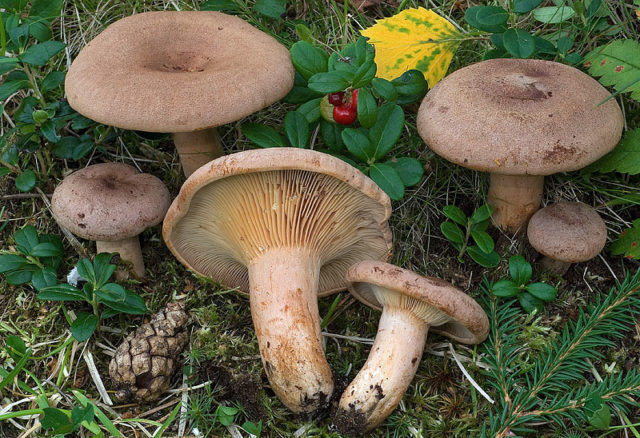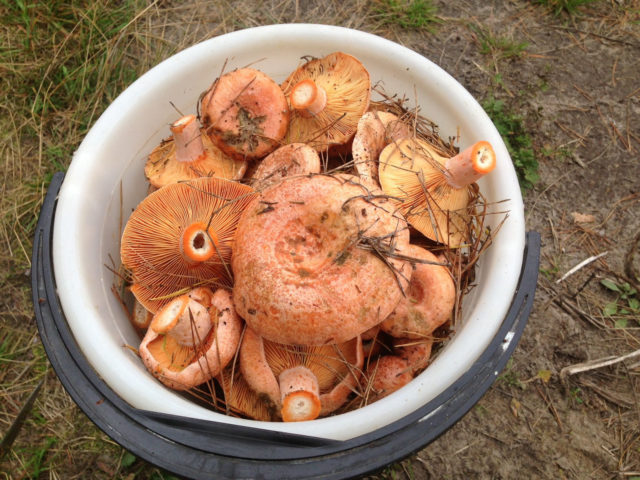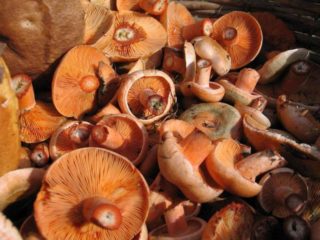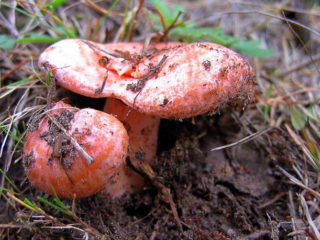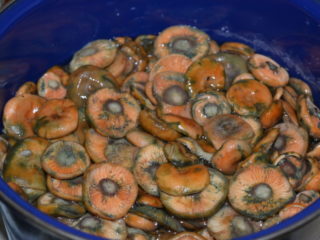Content
Gingerbreads are widespread mushrooms popular in "quiet hunting". They have their own characteristics, the study of which will make it easy to recognize this species in order to harvest a good harvest. Camelina mushrooms grow in coniferous and mixed forests in areas with a temperate climate. However, the main prerequisite for this is the presence of conifers.
Where mushrooms grow
Gingerbreads are edible gourmet mushrooms belonging to the genus Millechnikov. They have round caps that become funnel-shaped with age. They are bright yellow, orange or pinkish in color, but there are other rare coloration varieties. The leg of the mushroom is proportional to the cap; yellow or orange juice is released from its pulp, which changes color in the air.
Where mushrooms grow in Russia
Edible ginger mushrooms are harvested in most of Russia, but there are few truly mushroom places. In Russian forests, mushrooms are especially common in the following regions:
- in the Moscow region - in the forests along the Savelovsky direction, in the woodlands near the Torbeevskoye lake, on the northern side of Gremyachy waterfall, near the Ashukinskaya station;
- in the pine forests of the Voronezh region;
- in the forests of the Saratov and Samara regions;
- in Transbaikalia;
- in the vicinity of lakes Schelkun (Sverdlovsk region) and Allaki (Chelyabinsk region), located along the Chelyabinsk tract;
- in the Ochersky and Elovsky regions of the Perm Territory;
- near the village of Minderla near Krasnoyarsk.
In what forest do mushrooms grow
These fungi grow mainly on sandy soils. Nearby, the flowing river creates optimum soil and air moisture for them. The most suitable young forests for saffron milk caps:
- pine;
- spruce;
- cedar;
- fir;
- mixed birch-spruce-fir;
- other mixed forests with an abundance of needles.
Such fungi are rarely found in deciduous forests where there are solitary conifers. They can grow not only in natural conditions, but also artificial spruce plantings or self-seeding in the fields.
Under what tree do mushrooms grow
Camelina mushrooms grow under a spruce, fir, pine or cedar up to 5 m high. The peculiarity of these mushrooms is that they form a symbiosis with a coniferous tree. The mycelium penetrates the root of the plant and entangles it. Additionally, thanks to the mushroom, the tree receives moisture and microelements and supplies the camelina with carbohydrates and amino acids that are not present in the soil.
Its color depends on the type of tree under which the mushroom is located, forming mycorrhiza. It can range from light orange to rich copper. In old mushrooms, a greenish color appears on the cap.
Where do mushrooms grow?
Experienced mushroom pickers know to look for mushrooms in small forests. A dense thicket is not suitable for them because there is not enough illumination in it.Places where redheads are often found:
- coniferous young plantings in the fields;
- forest edges and glades;
- young forest clearings.
It is often possible to collect a lot of saffron milk caps on hillocks and small hills overgrown with low grass or moss. Dew also creates good conditions for mycelium development.
The characteristic places for these mushrooms are:
- open and lighted glades;
- overgrown fields with small shrubs and spruces;
- roadsides of glades and forest roads;
- long ditches, well lit by the sun.
At what temperature do mushrooms grow
Camelina mushrooms grow in summer - from July to September. In warm weather, they begin to appear as early as June. The last mushroom can be found in early November. After the autumn frosts, they disappear.
These are warm and sun-loving mushrooms. They begin to develop actively with a sufficient amount of sunlight and at a temperature of at least 10 0C. They grow well under certain conditions:
- temperature 15 - 27 0FROM;
- relative air humidity 50 - 60%.
How quickly mushrooms grow
The mushrooms grow quickly after the summer torrential rain. During this period, the air temperature and soil moisture become optimal. The features of the development of these mushrooms are as follows:
- mycelium can pass to a depth of 15 cm and develop from mid-spring to late autumn;
- drought and frost dehydrate the mycelium, but it does not die, but becomes more stable;
- the maximum size of the fruiting body of the fungus reaches 12-14 days after emergence.
The active growth phase of saffron milk caps begins after warm and heavy summer rains. In search of young and medium-sized mushrooms, you can go on the 5th-6th day after the rain, and sometimes - on the 3rd-4th day.
When to pick mushrooms
You can pick mushrooms in both summer and autumn. The saffron milk cap season is usually in August and September. The collection of some varieties of these mushrooms, depending on the climate, begins in July, and ends before the first autumn frosts in late October - November.
The best time to harvest is early in the morning, before the dew evaporates. She, covering the cap of the mushroom, is reflected in the sun's rays and helps to draw attention to it.
How to find a mushroom mushroom
Ryzhiks very rarely grow one at a time, much more often in large groups. Having found one mushroom, you should carefully examine the surroundings. There are always a few more copies nearby.
It is believed that large and strong mushrooms can be found on the northern side of conifers. In addition, satellite mushrooms - boletus, growing under the pines, are indicated on their growth.
You need to walk through the forest carefully, looking at your feet. Some mushrooms grow in plain sight, while others can hide in the grass or needles. To push it apart, it is convenient to use a long, thin, straight twig. Small hills under the spruce or pine, sunny edges are the places that are explored in search of saffron milk caps in the first place.
There are many varieties of these mushrooms. The table contains some recommendations that will help you decide on the choice of place and season for collecting mushrooms:
Variety | Characteristic | Where grows | When to collect |
Common (real, pine, gourmet, pine forest) | Bright red color and spotted hat. | In young pine forests: under a pine tree, along the edge of meadows, glades, in sunny mossy and grassy places. | Midsummer - early fall. |
Spruce (green) | Smaller than pine mushroom, with fragile pulp and a light monochromatic cap, on which there is always a bluish-green bloom. | Distributed everywhere in spruce and mixed forests and plantings under spruces. | Early August - late October. |
Red | Monochromatic reddish color, spots on the cap are weakly expressed, the stem has a light mealy bloom, its milky juice is almost cherry hue. | It is found in the Urals, Siberia, the European part of Russia, the mountainous Crimea under the Scots pine or Siberian cedar. | July - November. |
Half red (pine red) | A distinctive feature is an orange milky juice, which quickly darkens to a dark red hue. The caps of young mushrooms are orange, and of adults with a greenish tint and a pattern in the form of pronounced concentric circles. | In the temperate zone in pine and mixed with pine forests; in some places it is considered a rarity. | July - October. |
Alpine (salmon) | A large cap with a diameter of up to 20 cm of bright orange color, the flesh is of a salmon shade. | Fir forests from the Western Urals to Northern Europe. | August - October. |
Finnish (blue) | On the cut, it turns blue to a rich indigo shade. The outer color is brownish or olive with a reddish undertone, the plates are bright orange. | On the edges and borders of felling of spruce forests in the North-West of Russia and Karelia. | August - October. |
Japanese (fir) | Pale coloration and mycorrhiza only with whole-leaved fir. | In the Far East, in China, in the north of the Korean Peninsula, in Japan - in the forests where the whole-leaved fir grows. | September October. |
Dark | The hat is gray-gray, with a faint orange undertone, the plates under the hat are bright orange. When cut, milky juice changes color from carrot to greenish. | Pine and mixed forests of the northern part of Russia. It is considered a rare mushroom. | August - October. |
Wine | The color of the fruit body is from dark red to lilac. In young specimens, the color is rich, in mature specimens it is light. | The northern part of the belt with a temperate climate in forests with Scots pine. The mushroom is rare. | July - October. |
A more dangerous double is the inedible amber milkman. It has a pungent, unpleasant odor. He has a longer, without narrowing, leg. The surface of this mushroom has a velvety texture and is colored brownish pink.
How to pick mushrooms correctly
To collect these particular mushrooms, one should, without wasting efforts on other varieties, purposefully look for those places where mushrooms grow or can grow. When a suitable site is found, it is carefully, step by step, inspected, pushing apart the grass and coniferous needles with a long stick.
Mushrooms are collected in any convenient way. They can be cut with a knife, twisted or plucked. This, contrary to the established opinion, does not affect the mycelium and mycorrhiza: in order for the fungus to stop growing in its usual place, it is necessary to cut down the tree and uproot its roots.
The video clearly shows how you can organize a collection of saffron milk caps in the forest:
Conclusion
Knowing the signs of how mushrooms grow will make it possible to quickly find a place with many of these mushrooms. For this, several conditions must be met. They grow under conifers in forests, where there is a body of water nearby. Gingerbreads need increased light and soil that retains moisture. But they are not suitable for both very swampy and dry terrain. They are usually harvested after rain - in summer or early autumn.
